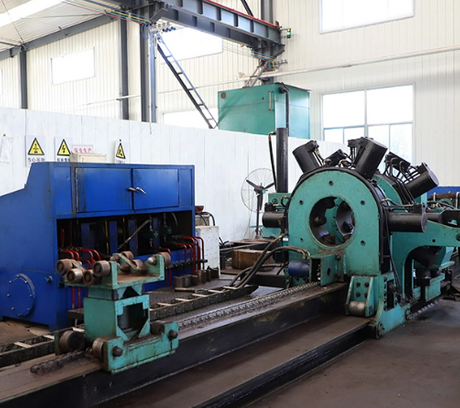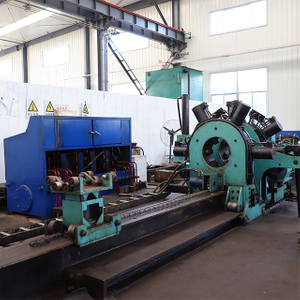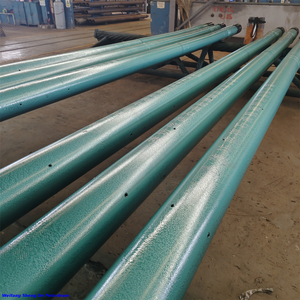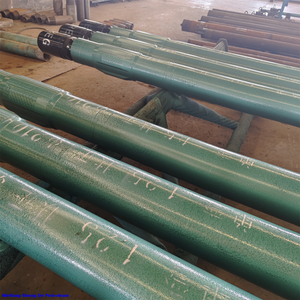Hydraulic breakout units are vital in tool service shops, providing the torque needed to assemble and disassemble threaded connections safely. Choosing the right unit improves efficiency, reduces downtime, and protects operators from hazards. In this article, you will learn how to select, operate, and maintain HBUs while implementing effective safety SOPs to enhance reliability and shop performance.
Identifying the Right Hydraulic Breakout Unit for Your Shop
Assessing Torque Requirements
Torque capacity is the most critical factor when choosing a hydraulic breakout unit. Each tool or motor connection has a maximum torque rating, which the HBU must meet without exceeding its operational limits. Comparing models across brands helps identify units that provide consistent torque while avoiding over-torque conditions that could damage components. Shops must match torque needs to the tool types used, ensuring every connection is handled safely and efficiently. Establishing torque charts for your shop reduces operator error and improves workflow consistency.
Evaluating Power Sources
Hydraulic breakout units can be powered manually, electrically, or via hydraulic pumps. Manual units are suitable for low-volume operations but may fatigue operators quickly. Electric and hydraulic units offer higher torque capacity and faster cycle times, supporting high-volume service shops. Energy efficiency, availability of power sources, and ergonomic design must be considered to enhance operator comfort and productivity. Additionally, mobile operations may require portable units that can adapt to confined or remote areas.
Compatibility with Existing Tools
Ensuring a hydraulic breakout unit fits existing tool service shop hydraulic tools is essential. Check adapter sizes, thread types, and hydraulic hose compatibility before purchasing. Misaligned or incompatible equipment can result in damaged connections, hydraulic leaks, and prolonged service times. Integration with current pumps and auxiliary devices is vital to maintain a streamlined operation.
Portability and Workspace Optimization
Compact units are preferred for confined indoor spaces, whereas fieldwork may require mobile or trailer-mounted units. Portability affects not only movement but also safety, as heavier units can pose lifting hazards. Proper storage solutions ensure HBUs remain operational and free from contamination. Organizing a workspace to accommodate both fixed and mobile units improves shop efficiency and reduces the risk of accidents.
Core Safety SOPs for Hydraulic Breakout Units
Pre-Operation Safety Checks
Before each use, operators must inspect all HBU components, including torque heads, reaction arms, and control valves. Checking hydraulic fluid levels and identifying leaks prevents unexpected failures during operation. All safety guards should be verified and emergency stop functions tested to ensure they work as intended. Pre-operation checklists are an effective way to standardize safety routines.
Personal Protective Equipment (PPE) Protocols
Operators must wear gloves, steel-toed boots, and eye protection. PPE prevents injury from hydraulic fluid injection, accidental pinches, and dropped tools. Training staff on proper PPE usage and compliance improves adherence to safety protocols. Real-world incident reports demonstrate that consistent PPE usage significantly reduces injury rates in tool service shops.
Operational Safety Procedures
During operation, monitoring hydraulic pressure and temperature limits ensures the HBU functions within safe parameters. Lockout/Tagout (LOTO) procedures are critical during maintenance to prevent accidental engagement. Operators should handle threaded connections carefully, maintaining reaction arms in place to prevent torque kickback. Safety procedures must be documented and reviewed regularly to maintain compliance.
Post-Operation Maintenance SOPs
After completing work, units should be cleaned and lubricated, with seals inspected for wear. Preventing contamination in hydraulic systems prolongs component life. Proper storage in controlled environments prevents corrosion and maintains the reliability of hydraulic breakout unit maintenance schedules. Consistent post-operation procedures support operational continuity and reduce the likelihood of unexpected failures.
Comparing Hydraulic Breakout Units: Performance and Efficiency
Torque Accuracy and Consistency
Precise torque application reduces wear on tools and ensures joint integrity. Calibrating HBUs regularly maintains accuracy and extends component lifespan. Differences between brands can affect both torque output and consistency, impacting long-term reliability. Shops should track torque deviations to schedule proactive maintenance.
Speed of Operation
Cycle times vary depending on unit type and design. Manual HBUs take longer, while hydraulic and electric units offer faster operations, especially in high-volume environments. Faster units improve productivity but require vigilant monitoring of operational parameters to maintain safety.
Reliability Under Continuous Use
Durability differs between indoor shop-grade units and field-grade models. Continuous use exposes seals and components to wear, which may compromise performance. Selecting HBUs rated for specific usage levels ensures reliability during extended operations.
Case Example: PETOL? vs. Vermeer HBUs
PETOL? ZB1260U units provide high torque and compact indoor operation capabilities. Vermeer Premium PBD21500 tongs offer battery-powered hydraulic operation, ideal for reducing manual labor in high-volume applications. Comparing key metrics such as torque capacity, cycle time, and safety features helps shops decide which unit best fits operational needs.
Feature | PETOL? ZB1260U | Vermeer PBD21500 | Notes |
Max Torque | 5,000 ft.-lbs | 4,500 ft.-lbs | PETOL has higher torque rating |
Power Source | Hydraulic | Battery Hydraulic | Vermeer is portable for field use |
Cycle Time | Moderate | Fast | Faster operation reduces downtime |
Safety Features | Pressure relief, guards | Emergency stop, dual batteries | Both meet safety standards |
Maintenance Strategies for Long-Term Reliability
Maintenance Task | Frequency | Responsible Personnel | Key Checks / Focus Areas |
Routine Inspections | Weekly / Monthly | HBU Operators / Maintenance Team | Seals, hoses, hydraulic fluid levels, pressure relief valves, reaction arms |
Preventive Maintenance | Quarterly / Biannually | Maintenance Technicians | Lubrication, component wear, torque calibration, leak detection |
Troubleshooting Common Issues | As Needed | Operators / Technicians | Hydraulic leaks, pressure drops, mechanical jams, unusual noises or vibrations |
Documentation & Record Keeping | Ongoing | Maintenance Supervisor | Maintenance logs, calibration records, inspection reports, trend analysis |
Operator Training | Onboarding + Refresher Courses | Shop Manager / Safety Officer | Breakout unit operational procedures, safety SOPs, early warning signs, hands-on exercises |
Routine Inspections and Preventive Maintenance
Scheduled inspections of seals, hoses, and hydraulic fluids help detect potential failures before they escalate.
● Regular preventive maintenance reduces downtime and extends HBU lifespan.
● Monitoring component wear allows planned replacements rather than costly reactive fixes.
● Check pressure relief valves and reaction arms to ensure safe, consistent operation.
● Use inspection checklists to standardize routines and avoid missed steps.
Troubleshooting Common Issues
Hydraulic leaks, pressure drops, and mechanical jams are frequent challenges in tool service shops.
● Step-by-step troubleshooting protocols streamline problem resolution and minimize equipment damage.
● Operators should recognize early warning signs, such as unusual noise or vibration, to act proactively.
● Maintain a troubleshooting guide specific to each HBU model to improve response time.
● Implement temporary corrective measures while scheduling full maintenance to avoid workflow interruptions.
Documentation and Record Keeping
Accurate records of maintenance activities, torque calibrations, and inspections support regulatory compliance.
● Maintaining logs aids safety audits and demonstrates adherence to SOPs.
● Trend analysis of past issues helps predict when components will require replacement.
● Use digital or cloud-based systems for easier tracking, reporting, and data sharing.
● Document both routine and emergency repairs to create a comprehensive maintenance history.
Operator Training Programs
Well-structured training ensures staff follow SOPs and operate HBUs safely.
● Include hands-on exercises for proper breakout unit operational procedures.
● Schedule refresher courses regularly to reinforce best practices and reduce errors.
● Train operators to identify maintenance needs and report early warning signs.
● Encourage knowledge sharing between experienced and new staff to maintain consistent skill levels.
![hydraulic breakout unit hydraulic breakout unit]()
Enhancing Shop Safety Culture
Standardizing Safety Procedures
Consistency in breakout unit safety procedures reduces operational errors and protects operators from avoidable hazards. Clear labeling of torque limits and hazard zones, combined with visible signage and documented SOPs, reinforces correct practices. Standardization also supports quicker onboarding and improves compliance during audits.
Emergency Response Planning
Develop comprehensive plans for hydraulic fluid spills, equipment malfunctions, and operator injuries. Conduct internal drills and coordinate with external emergency services to ensure preparedness. Maintain accessible emergency kits and response stations. Effective planning minimizes downtime, limits equipment damage, and protects personnel during unexpected incidents.
Safety Audits and Continuous Improvement
Regular audits identify gaps in safety procedures and operational practices. Reviewing incident reports and operator feedback allows shops to update SOPs and implement corrective measures. Integrating continuous improvement into daily operations fosters a proactive safety culture, enhances accountability, and strengthens long-term reliability across all HBUs.
Optimizing Workflow and Productivity with HBUs
Workflow Analysis and Bottleneck Identification
Mapping breakout operations highlights time-intensive tasks and potential bottlenecks. Analyzing workflow data enables targeted improvements, such as optimizing tool placement or adjusting torque sequences. Streamlining these stages reduces idle time, improves cycle efficiency, and ensures hydraulic breakout unit operational procedures align with productivity goals.
Automation and Smart HBU Features
Digital torque monitoring and automated shutoffs increase precision and reduce operator error. Smart HBUs provide real-time performance data, supporting proactive adjustments and preventive maintenance. Integrating automation improves efficiency, extends equipment lifespan, and allows operators to focus on critical tasks without compromising safety.
Integration with Shop Scheduling
Coordinating multiple HBUs requires careful planning to prevent workflow interruptions. Scheduling routine maintenance around production cycles maintains continuous operations, while centralized tracking of unit status, service history, and operator assignments optimizes resource allocation. Effective integration reduces conflicts and enhances overall productivity.
Cost-Benefit Analysis
Evaluating long-term ROI includes maintenance costs, reduced downtime, and improved safety. Comparing initial investment against efficiency gains and accident prevention helps justify purchases. Proper selection, maintenance, and SOP adherence maximize operational efficiency while safeguarding staff and shop equipment.
Conclusion
Selecting the right hydraulic breakout unit and following safety SOPs ensures efficient shop operations. Considering torque, power source, compatibility, and portability boosts reliability. Regular maintenance, operator training, and standard procedures reduce accidents and downtime. Weifang Shengde Petroleum Machinery Manufacturing Co., LTD. provides high-quality units that enhance performance and safety while supporting long-term reliability.
FAQ
Q: What is a hydraulic breakout unit used for in tool service shops?
A: A hydraulic breakout unit applies controlled torque to assemble and disassemble threaded connections safely. It enhances workflow efficiency, reduces operator fatigue, and ensures consistent performance across tool service shop hydraulic tools.
Q: How do I select the right hydraulic breakout unit?
A: Evaluate torque requirements, power source, tool compatibility, and workspace constraints. Choosing the correct unit ensures smooth operations, aligns with breakout unit operational procedures, and prevents equipment strain or misalignment.
Q: Why is hydraulic breakout unit maintenance important?
A: Regular hydraulic breakout unit maintenance prevents leaks, pressure drops, and mechanical issues. It extends equipment lifespan, reduces downtime, and keeps operations compliant with safety and performance standards.
Q: What safety measures should be followed?
A: Breakout unit safety procedures include PPE, pre-operation inspections, emergency stops, and LOTO. Following these steps minimizes accidents, protects personnel, and ensures consistent adherence to operational protocols.
Q: How do hydraulic breakout units differ in performance?
A: Units vary in torque accuracy, cycle speed, and durability under continuous use. Comparing features helps select a model that matches shop demands and optimizes efficiency while following breakout unit operational procedures.
Q: Can training improve hydraulic breakout unit operation?
A: Yes, hands-on operator training reinforces SOPs, improves equipment handling, and ensures proper hydraulic breakout unit maintenance. Well-trained staff reduce errors, prevent accidents, and maintain consistent shop productivity.


















